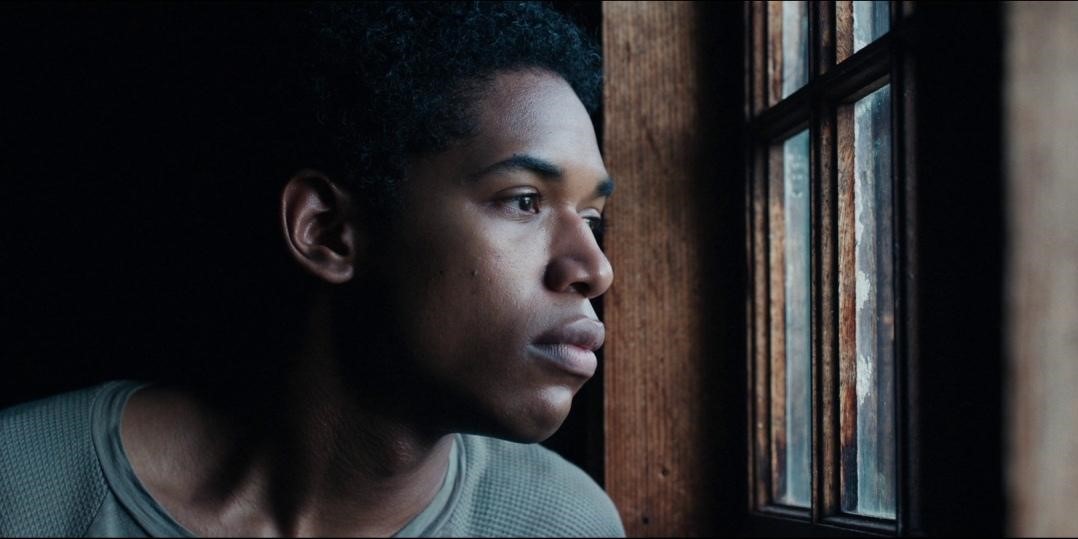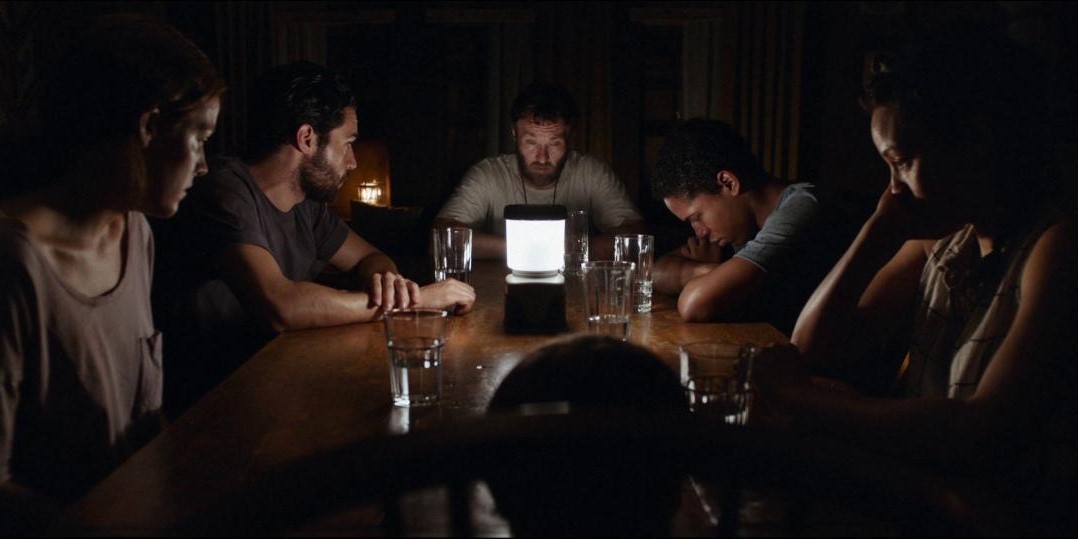Directed by Trey Edward Shults, ‘It Comes at Night’ is a 2017 horror film that follows a family of survivors after the world is devasted by a mysterious apocalyptic event. Isolating themselves in a house in the woods, Travis and his family spend their days in cautious foraging, and their nights in fearful vigilance, uncertain of the horrors that await beyond their haven. Their solitude is interrupted by another family seeking shelter, and while they initially welcome them, mutual fear and mistrust do not take long to fester.
The story is one of mind-numbing suspense and paranoia, exploring how the characters react when pushed to the edge with fear birthing mistrust. Shults’ masterful direction crafts an atmosphere of palpable dread and psychological turmoil, evoking an unnerving sense of foreboding that lingers throughout the narrative. The movie adeptly probes the depths of human nature, portraying the fragility of trust and the primal instincts that surface when survival is at stake.
Is It Comes at Night Based on a True Story?
‘It Comes at Night’ is an original work written by Trey Edward Shults himself after his father’s death, taking inspiration from a 16th Century oil painting and some classic horror films. Shults has made a very personal film in ‘It Comes at Night,’ writing its script as a form of therapy after his father’s passing. Talking about his relationship with his father and its impact on the film, the filmmaker said, “I had a weird relationship with my dad and he battled addiction and I hadn’t seen him in ten years and then I was with him on his deathbed.”

Shults added, “He was so full of regret and he didn’t want to let go and I was just trying to help him find some kind of peace. What I said to him was what Sarah says to her dad at the beginning of the film.” Two months after his father’s demise, Shults channeled his emotions and fears into the script, dealing with some dark themes throughout the film, the primary being mortality. The oil painting, ‘The Triumph of Death,’ by Pieter Bruegel the Elder, was an inspiration along similar lines. It depicts death coming for humanity in the form of skeletons hacking away at terrorized townsfolk, who struggle in vain to either escape or fight back.
Featuring a barren wasteland as a backdrop, the painting made its way into the opening sequence of the film, acknowledging its spiritual contribution to the work. The film also takes some inspiration from classic horror movies, including ‘The Shining,’ ‘The Thing,’ and ‘Night of the Living Dead.’ Speaking of the nature of the films’ influence on ‘It Comes at Night,’ the director said, “What I really love about the movies is what the horror does to the people, if you look at ‘The Thing’ or ‘Night of the Living Dead,’ I think it’s less about the monster, less about the zombies, and more about the fear and paranoia it instills in those people.”
Shults continued, “I was excited by that, and I was also excited at the idea of a family drama in that, caring about these people and their stories.” The cinematic navigation of the house the families live in, was inspired by the Overlook Hotel from ‘The Shining.’ Interior scenes were deliberately shot in a way to keep the layout of the house vague. The lack of an established structure is further built on later in the movie, becoming more and more labyrinthine, and serving as a metaphor for the mesh of Travis’ head.
‘It Comes at Night’ is not based on real events, but is created out of the deep and tumultuous emotions of Trey Edward Shults following his father’s demise. The dark themes of the film were further inspired by Pieter Bruegel’s painting of doom and previous cinematic horror created by Paul Thomas Anderson and John Cassavetes.
Read More: Best Home Invasion Horror Movies on Netflix


You must be logged in to post a comment.